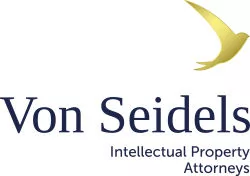Internationally there is a potential legislative threat to trade mark law in the form of plain packaging legislation. Australia was the first country to adopt such legislation, the Tobacco Plain Packaging Act, 2011 ("the Act") restricting and prohibiting the use of logos and the like on the packaging of tobacco products. The Act imposes significant restrictions on the colour, shape and finish of retail packaging for tobacco products. It prohibits the use of trade marks on such packaging, other than in a manner specifically permitted. Therefore, trade marks can only be used in a bland, word mark form and no logos, device marks or label marks may be featured on the packaging of tobacco products. As French CJ, from the High Court of Australia explained:
"...the Tobacco Plain Packaging Act is part of a legislative scheme which places controls on the way in which tobacco products can be marketed."
The Australian legislation is sure to set an international trend, with countries such as New Zealand and Namibia already working on legislation to restrict the use of trade marks on the packaging of tobacco products. Professor Owen Dean, of the Faculty of Law at Stellenbosch University claims that it can be safe to assume that the South African Government will in due course publish legislation that clones the Act, which will introduce the same restrictions.
Recently in South Africa, similar restrictions have been placed on foodstuffs for infants and young children. On 6 December 2013 regulation 7 of Regulations R991, relating to foodstuffs for infants and young children came into operation. This regulation prohibits any advertising practices in respect of infant and follow-up formula, powdered milk or powdered drinks, as well as feeding bottles, teats and feeding cups, marketed as suitable for infants or young children. On 6 December 2014 regulations 2 to 6 of R991 will come into operation which will place strict requirements on the labelling and packaging of the designated products. These include the prohibition of any graphical representation apart from those necessary to show the correct method of preparing and using the product. The company logo and brand name will be permitted provided that they do not contain a picture of an infant, young child or other humanised figure. The label of the relevant product may also not refer to, or advertise any other designated product.
Plain packaging legislation could have numerous effects on trade marks and trade mark law. Firstly, Dean makes a compelling argument that the proposed ban of the use of brand logos on tobacco packaging constitutes the deprivation of property and that plain packaging legislation would be unconstitutional. Dean argues that deprivation of trade marks will take place if the state prevents their use and thereby destroys them. On the other hand, former Supreme Court of Appeal Deputy President, Judge Harms, believes that any limitation, direct or indirect, on the use of tobacco would be constitutionally justifiable.
Secondly, trade marks are considered an extremely valuable commercial asset. This brand equity essentially derives from the manner and the extent of the use of a trade mark. Thus, the use of a trade mark has an enormous financial and commercial implication. Plain packaging legislation could cause trade mark use to cease and brand equity could potentially dissipate. Consequently, Harms is of the opinion that plain packaging will lead to more counterfeiting and smuggling. A diluted trade mark can easily be counterfeited, especially if trade mark owners no longer have the ability or motivation to contain smuggling.
It would appear that the Government is seeking to achieve social ends through the prohibition of the use of trade marks. Their purposes such as reducing the consumption of tobacco products or to promote breastfeeding are commendable. However, attempting to achieve these aims by targeting the use of trade marks is not necessarily reasonable. If South Africa should adopt legislation similar to the Australian Tobacco Plain Packaging Act and in the event that Regulation R991 relating to foodstuffs for infants and young children is challenged before the South African courts, it should be examined afresh and through the prism of the South African Constitution.
The content of this article is intended to provide a general guide to the subject matter. Specialist advice should be sought about your specific circumstances.

